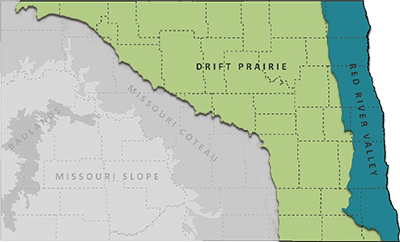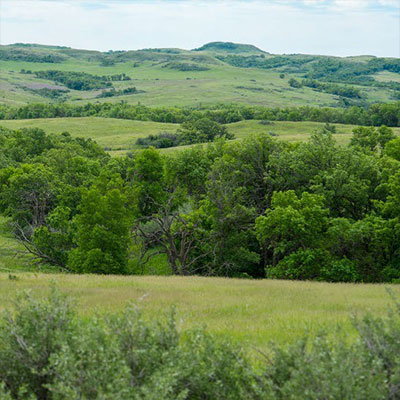Ruffed Grouse

NDGF
L 17”, WS 22”, 1.3 lb. Brownish-gray or reddish-brown, slightly rounded tail with a black or brown band.
Status in North Dakota
Year-round resident. Peak breeding season April to early July.
Reason for SWAP Designation
At-risk based on expert review (SGCN c.).
Range limited to the Turtle Mountains, Pembina Hills, and occasionally in the aspen sandhills of Towner County.
Ruffed Grouse populations usually go through to 9 to 10-year cycles of increasing and decreasing numbers.
Because the habitat in North Dakota is so fragmented, a 10-year peak has not occurred since the late 1990’s; however, populations have been increasing slightly since 2019.
Threats
Loss of upland deciduous forest.
Decadent aspen forest stands.
Classified as climate-endangered, Ruffed Grouse is projected to lose more than half of its current distribution by 2050, with no net gains of new areas (Audubon).
Research and Monitoring
Habitat requirements and demographic studies have been broadly researched on the breeding grounds, but limited research efforts in North Dakota.
The NDGF conducts annual drumming surveys on long-term routes in the Turtle Mountains and Pembina Hills.
Management Recommendations
- Protect and restore native aspen forests.
- Aspen stands should be managed to provide a diversity of age classes within the normal home range of ruffed grouse.
- Avoid grazing in clear cut/managed stands until new trees are established (10 years and older).
- If grazing woodlands, a grazing plan should be implemented to protect a diversity of aspen age classes.
- Rejuvenate decadent stands by bulldozing or logging old trees (60 years and older)
- Reduce cropping/tillage along woodland edges to allow suckering of aspen.
- Control tall woody vegetation, including single trees that act as raptor perches and raptor nest sites.



